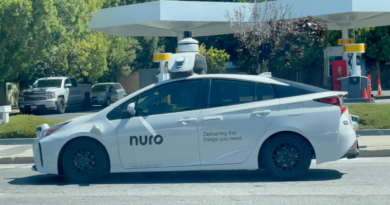Waymo versus Human: Who Drives Safer? New Study Clearly Answers The Question
The approval of the first driverless robotaxi fleets in San Francisco was accompanied by an investigation into the safety of autonomous vehicles. While every incident involving robotaxis is immediately receiving large attention in the news, giving the impression they are involved in accidents more often than not, the numbers speak a much different language.
Although far from all accidents involving human-driven vehicles appear in police reports, more are recorded in insurance claims. But here, too, there is a large underreported number, as some incidents have resulted in no damage or so little that the parties refrain from reporting them. Thus, it is estimated that only one-third of accidents are reported to the police, and there mainly those with high damage and physical injuries. About two-thirds of all cases are reported to the insurance company, and one-third are not reported before.
In the case of autonomous cars, every incident must be reported; the California DMV, for example, even has its own form for this purpose.
CA DMV: Report of Traffic Collision Involving an Autonomous Vehicle
In a joint study, Swiss insurer Swiss Re compared Waymo’s data with its own insurance data, and concluded that Waymo’s autonomous vehicles are a lot safer than human-driver-controlled vehicles.
Swiss Re contrasted the figures with its own insurance claims, which included 600,000 claims involving more than 125 billion miles (200 million kilometers). This included 1.11 physical damage claims to human drivers for every one million miles (1.6 million kilometers). By contrast, in the 3.8 million miles (6 million kilometers) that Waymos had traveled driverless to date, there was not a single insurance claim involving an injury or fatality. When a safety driver was present in the vehicle during autonomous operation and able to take control, the number of physical injuries dropped by 92 percent for nearly 35 million miles (56 million kilometers).
With human drivers, there were 3.26 claims per million miles, compared with just 0.78 claims at Waymo. That equates to a 76 percent reduction in insurance claims costs.
What the study doesn’t even mention is that vehicles in a fleet learn together. Over time, it is expected that autonomous cars will drive even more safely and that there will be even fewer collisions. This means that Vision Zero, i.e. the goal of zero traffic fatalities, is within reach as soon as all traffic is covered by autonomous cars.
Here is the full study.
KREATIVE INTELLIGENZ
Über ChatGPT hat man viel gelesen in der letzten Zeit: die künstliche Intelligenz, die ganze Bücher schreiben kann und der bereits jetzt unterstellt wird, Legionen von Autoren, Textern und Übersetzern arbeitslos zu machen. Und ChatGPT ist nicht allein, die KI-Familie wächst beständig. So malt DALL-E Bilder, Face Generator simuliert Gesichter und MusicLM komponiert Musik. Was erleben wir da? Das Ende der Zivilisation oder den Beginn von etwas völlig Neuem? Zukunftsforscher Dr. Mario Herger ordnet die neuesten Entwicklungen aus dem Silicon Valley ein und zeigt auf, welche teils bahnbrechenden Veränderungen unmittelbar vor der Tür stehen.
This article was also published in German.


